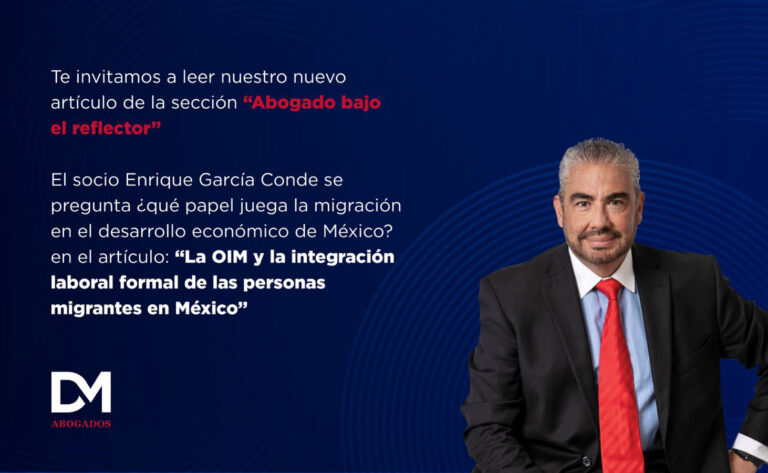Solutions developed by the HRBP will have to take the circumstances of each person into consideration, even in workplaces with thousands of workers, the magic will lie in the way in which team leaders are enabled to address these particularities, says Blanya Correal.
The resignification of work, nearshoring, the effervescent social moment, regulatory changes in labor matters and the new generations of millennials and centennials participating in the world of work are just some of the changes that are modifying the reality of organizations in Latin America; and Mexico, being the region’s most important economy, is experiencing their effects directly; what is the consequence and how should we prepare ourselves?
When we put all of these elements in the blender and we are able to find the essence behind all of them, what is not necessarily obvious becomes clear: all of these trends have a strong impact on people, particularly in a culture of companies; let us address this one thing at a time.
The resignification of work as an accelerator of the connection
What is the root cause is no longer so clear, and it doesn’t truly matter, but what is true is that work has now taken a different dimension in people’s lives. Companies who have understood this need and are working on connecting work with the purpose of those who perform it are achieving significant increases in the level of connection between leaders and work teams, which translates into better performance, less turnover and an increased commitment. This, together with the type of expectations that younger workers bring to the table, has created the need for developing a much more solid and innovative value proposal for the employee that truly addresses his personal, family and labor demands.
Nearshoring as an accelerator for competitiveness
Mexico is the second country with the highest direct foreign investment, we see this in the extensive industrial development that we continue to have, particularly in the Center and in the North of the Republic; this means that the scarcity of talent will be even more challenging and with it, the need for elevating the ability to generate more humane work environments, which will no longer be a competitive advantage, but the minimum standard.
The social moment and the labor reform as accelerator of a culture of maturity in companies
Votes to approve Collective Bargaining Agreements (CCTs) or to lift strikes, amparo proceedings against PTU [Employee Participation in Company Profits ] caps and discussions about the reduction of the workday provide evidence of a very active agenda but, above all, a legislative discourse leaning much more strongly toward the worker. The participation of people in the definition of their work conditions has driven the need for workers to have a greater awareness of the impacts of their “desires” in the viability of companies. And, at the same time, they are driving the companies to propose improvement strategies for salary, benefits and perks in general that are much more attractive and clearer, capable of earning the vote and achieving stability.
It would seem that each one of these impacts merits, by itself, a full action plan and strategy; however, inside organizations, everything ends up falling into the day-to-day life of the Human Resources Business Partner (HRBP) as facilitator of the actions for “dealing” with so many challenges. This means that there is a need, today more than ever, to evolve his role, becoming enriched with key aspects that will enable him to ensure that the business is ready in face of this reality.
In this sense, three key capabilities emerge that must be installed in the profile of those who have the operational responsibility of managing Human Resources,
1. A more empathic approach. The HRBP must be the “collaborator’s voice” that has taken a broader perspective, not only because the new generations are requiring a more active HR role in communication, but also because the social environment is causing people to expect that the organization fills many more areas in their lives and to offer a more comprehensive experience that reaches their family and even the community. One of the significant challenges for the HRBP will be to ensure that this empathy does not detract from his objectivity and, therefore, his capacity for judgment and his business criteria will be fundamental for playing an effective role.
2. A more differentiated and segmented approach. Today, more than ever, the solutions developed by the HRBP will have to take the circumstances of each person into consideration, even in workplaces with thousands of workers, the magic will lie in the way in which team leaders are enabled to address these particularities. Generic wellbeing, development or training programs do not work any longer. Initiatives must be adapted to needs beyond gender and age. For example, two mothers with children of the same ages will have different scheduling needs depending on the family support network that each one of them has. The challenge for the HRBP resides in not letting segmentation detract from his efficiency and timeliness for reaching resolutions; thus, his capability for empowering leaders to achieve impact through actions will be key.
3. A more data-driven approach for better execution. One of the key areas of opportunity for HR is the measurement of the impact of programs, initiatives, and actions; today, more than ever, the HRBP must fulfill his role based on precise and timely information. HR control panels must be aligned with those of the business, focusing more on measuring the “why” and not so much the “how”; indicators such as hours of training or benefits’ coverage are no good if they do not end up generating the impact that is sought. The challenge is ensuring the reliability of information and calculating the return of the result and, thus, it will be key for the HRBP to ensure that the focus on execution does not detract from strategy and from his ability to see the forest, and it will be fundamental that he is capable of continuously monitoring that his actions are achieving the expected objectives, that is, that the “why” is very clear.
The purpose of the role of Human Resources in the organization is probably one of the most important ones in the current context. the CHRO [Chief Human Resources Officer] and the HRBP are already playing a fundamental role for businesses; nevertheless, the most relevant thing is not to lose sight of the fact that the impact of their work may transform the life of a person, a family and even a community, this is why preparing to evolve in their roles will be a very rewarding task in the end.
____
Editor’s note: Blanya Correal is an Industrial Engineer with over 25 years’ international experience in Human Resources and labor strategy in several multinational companies such as Coca Cola Femsa, Danone and Nissan. She has been recognized for two consecutive years as one of the 30 best CHROs in Mexico and she is in the top 20 of the ranking of the Most Powerful Women in Mexico according to Expansión magazine. Follow her in LinkedIn. The opinions published in this column belong exclusively to the author.




